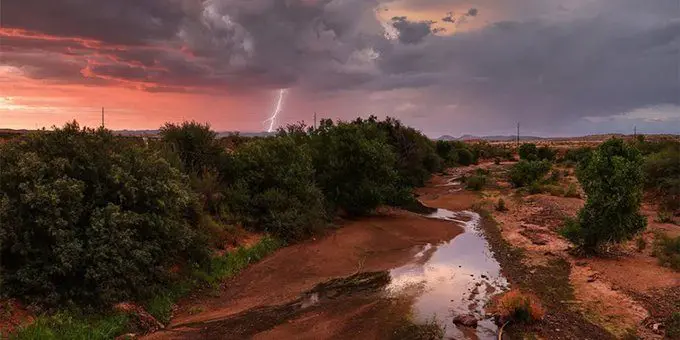
The remnants of Tropical Storm Alvin, the first named storm of the 2025 Eastern Pacific hurricane season, are delivering unexpected rainfall and thunderstorms to the Western United States. This influx of moisture is particularly notable in the Desert Southwest, a region that typically experiences dry conditions during this time of year.
Alvin’s Path and Dissipation
Tropical Storm Alvin formed in the Eastern Pacific south of Mexico, becoming the first named storm of the 2025 hurricane season across all Northern Hemisphere ocean basins. Located approximately 500 miles south-southeast of the Baja California Peninsula, Alvin posed limited risks to the Mexican coast, with expected impacts including high swells and increased rip currents. The National Hurricane Center monitored the storm, which had the potential to intensify while over warm waters but was anticipated to weaken as it moved into cooler waters.
Impact on the Western United States
As Alvin weakened, its remnants continued to move northward, bringing moisture into the Desert Southwest. This surge of moisture, combined with an upper-level low, has led to increased humidity levels and rain chances for cities such as Phoenix and Yuma, Arizona, and potentially as far west as Las Vegas and Palm Springs, California.
In Arizona, a Flood Warning was issued for Boulder View and Wildcat burn-scar areas in Maricopa County. Similarly, New Mexico’s Hermits Peak and Calf Canyon burn scars were under a Flood Watch through Monday evening. These areas are particularly susceptible to flash flooding due to the lack of vegetation and soil stability.
Forecast and Preparedness
The National Weather Service forecasts that the moisture from Alvin’s remnants will continue to affect the region through midweek. While rainfall amounts are generally expected to be less than a quarter-inch across southeastern California, parts of Arizona could see totals closer to a half-inch. Rainfall amounts could be enhanced over higher terrain, where totals of up to an inch are possible, potentially leading to minor flooding in downstream areas.
Residents in the affected areas are advised to stay informed through local weather updates and to exercise caution, especially in flood-prone regions and areas with burn scars. The combination of tropical moisture and existing weather systems underscores the importance of preparedness for unexpected weather events.

Source: Tweet above

Source: Tweet above


























